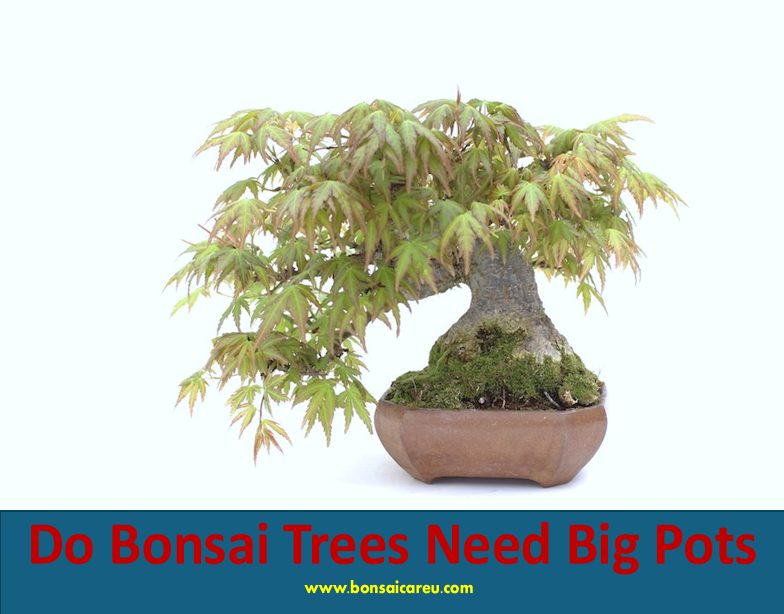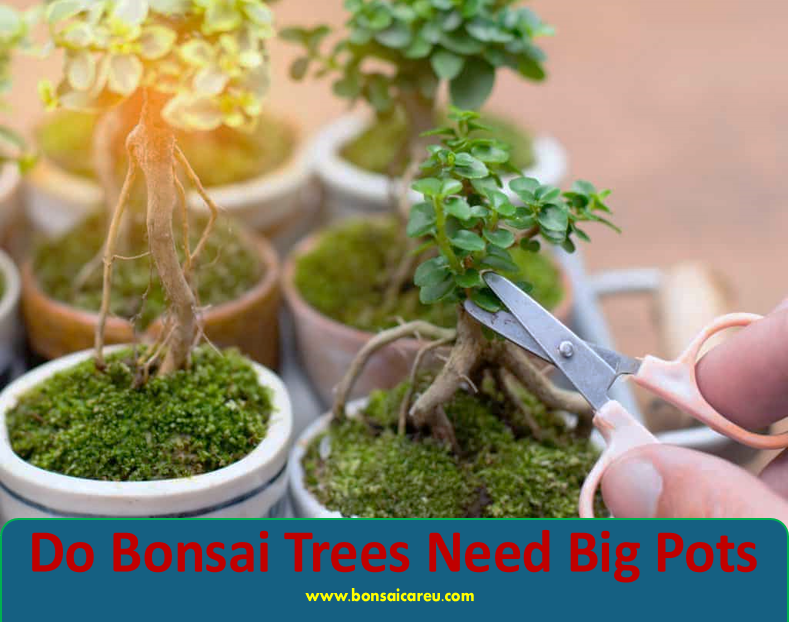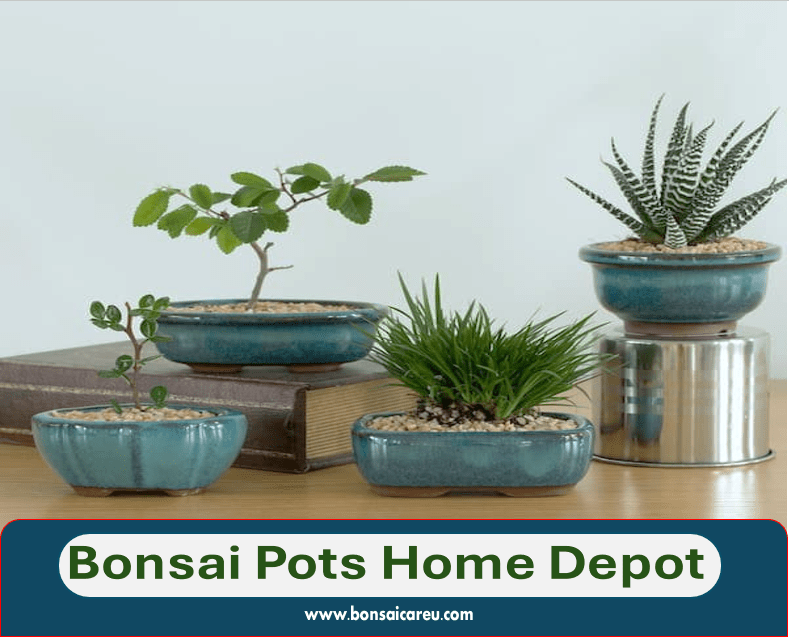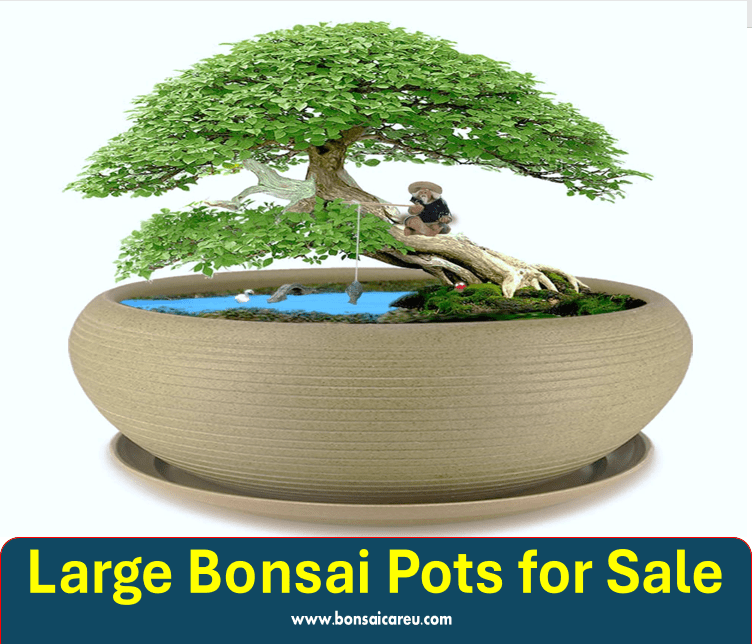Do Bonsai Trees Need Big Pots: Bonsai trees do not necessarily need big pots; the pot size should be proportional to the tree’s roots and aesthetic. Bonsai trees, known for their intricate beauty, require careful consideration when it comes to pot size.
While it may seem logical to assume that bigger pots are better for bonsai trees, the reality is quite different. The size of the pot should be in harmony with the tree’s roots, trunk, and overall appearance. A pot that is too large can overwhelm the bonsai’s delicate charm, while a pot that is too small can hinder root growth and affect the tree’s health.
Understanding the relationship between bonsai trees and pot size is crucial for their proper care and maintenance.

Factors To Consider
When it comes to growing bonsai trees, choosing the right pot is essential for their overall health and aesthetic appeal. Several factors need to be considered to ensure that the pot is suitable for the bonsai tree’s specific requirements. Let’s delve into the key factors to consider when selecting a pot for a bonsai tree.
Size And Proportion
The size of the pot plays a crucial role in the development of the bonsai tree. It should be in proportion to the tree’s roots, trunk, and overall aesthetic. A pot that is too small can restrict root growth and hinder the tree’s health, while a pot that is too large may overpower the delicate beauty of the bonsai. Shallow pots are preferable as they allow for proper root development.
Drainage And Wiring Holes
Proper drainage is essential for the health of the bonsai tree. The pot should have adequate drainage holes to prevent waterlogging, which can lead to root rot. Additionally, wiring holes are necessary for securing the tree to the pot, ensuring stability and preventing displacement during windy conditions or while handling the tree.
Material Of The Pot
The pot’s material can impact the bonsai tree’s growth and health. Ceramic pots are commonly used for their aesthetic appeal and moisture retention properties. Plastic pots are a more affordable and durable alternative, especially for trees in training. Mica pots are another popular choice due to their lightweight and insulating properties. Each material has its own advantages and should be chosen based on the specific needs of the bonsai tree.

Benefits Of Small Pots
Promoting Root Confinement
Bonsai trees thrive in smaller pots as they promote root confinement, which encourages root growth and development.
Enhancing Aesthetic Appeal
Small pots enhance the aesthetic appeal of bonsai trees by maintaining proportionality and highlighting the delicate beauty of the tree.
Types Of Bonsai Pots
Bonsai pots play a crucial role in the growth and aesthetics of your bonsai tree. Choosing the right type of pot is essential for the well-being of your bonsai. Different types of bonsai pots are available in the market, each with its own unique characteristics.
Ceramic Pots
Ceramic pots are popular among bonsai enthusiasts for their elegant designs and sturdy construction. These pots come in various shapes, sizes, and colors, allowing you to match them with your tree’s style. They are known for their durability and ability to retain moisture, which is beneficial for the health of your bonsai.
Plastic Pots
Plastic pots are a cost-effective alternative to ceramic pots, especially for beginners or when training bonsai trees. They are lightweight, durable, and easy to clean. Plastic pots also come in a wide range of sizes and designs, making them a versatile choice for different bonsai species.
Mica Pots
Mica pots are a modern option that combines the benefits of ceramic and plastic pots. They are lightweight yet durable and have excellent drainage properties. Mica pots are also known for their insulating properties, protecting the roots of your bonsai tree from extreme temperatures.
Choosing The Right Pot
When it comes to caring for your bonsai tree, choosing the right pot is crucial for its health and aesthetic appeal. The size, material, and design of the pot can impact the growth and overall appearance of your bonsai. In this section, we will explore the factors to consider when selecting the perfect pot for your bonsai tree.
Matching The Pot To Tree Size
The pot size should be proportionate to the size of the tree. A pot that is too small can restrict root growth and hinder the tree’s health, while a pot that is too large may overpower the delicate beauty of the bonsai. It’s essential to choose a pot that provides adequate space for the roots to grow and establish a healthy foundation for the tree.
Considering Tree Species And Growth Rate
Different tree species have varying growth rates and root systems. It’s important to consider the specific needs of your bonsai tree species when selecting a pot. Some species may require deeper pots to accommodate their extensive root systems, while others thrive in shallower pots. Understanding your bonsai tree’s growth rate and root structure is crucial in choosing a pot that supports its long-term health and vitality.
Potting Techniques
Bonsai trees don’t necessarily need big pots, but rather pots that are in proportion to the tree’s roots, trunk, and overall aesthetic. The size of the pot should be carefully chosen to avoid restricting root growth or overpowering the delicate beauty of the bonsai.
It is also important to choose a pot with proper drainage and wiring holes to ensure the tree’s health and stability.
Off-centered Planting
Bonsai trees benefit from off-centered planting as it creates visual interest and mimics the natural growth patterns of trees in the wild.
Using Sphagnum Moss And Akadama Soil Mix
Combining sphagnum moss with akadama soil creates a well-draining and nutrient-rich environment for bonsai trees, promoting healthy growth.
Frequently Asked Questions
Can Bonsai Trees Grow In Normal Pots?
Yes, bonsai trees can grow in normal pots if they have drainage and wiring holes. The pot size should be proportional to the tree’s roots and trunk for proper growth. Plastic pots can be a good substitute for ceramic pots, especially for trees in training.
How Do Bonsai Survive In Small Pots?
Bonsai survive in small pots by proper fertilization to replenish soil nutrients due to limited root space.
Why Small Pots For Bonsai?
Small pots for bonsai are essential to maintain the tree’s health and aesthetic. They keep root growth in check and prevent overpowering. Proper fertilization is needed due to the confined space. Shallow pots are preferable, ensuring proportion and beauty. Plastic pots are a cost-effective and durable alternative to ceramic.
What Can I Use For Bonsai Pots?
You can use plastic pots as a substitute for ceramic pots, especially for training trees. Plastic pots are cheaper, durable, and almost unbreakable.
What Size Pot Is Suitable For A Bonsai Tree?
The pot size should be proportional to the tree’s roots, trunk, and overall aesthetic. A pot that is too small can restrict root growth, while a pot that is too large may overpower the delicate beauty of the bonsai.
Can Bonsai Trees Grow In Normal Pots?
Yes, many containers can serve as pots for bonsai trees if they meet certain requirements. The pot should have drainage and wiring holes so the tree can be fixed to it.
Conclusion
Choosing the right pot size for your bonsai tree is crucial for its health and aesthetics. A pot that is too small can hinder root growth, while a pot that is too large may overpower the delicate beauty of the bonsai.
It’s important to consider the tree’s roots, trunk, and overall aesthetic when selecting a pot. Additionally, proper fertilization and drainage are essential for the bonsai’s survival in a small pot. By carefully choosing the right pot size, you can ensure the well-being and visual appeal of your bonsai tree.


